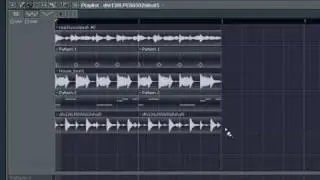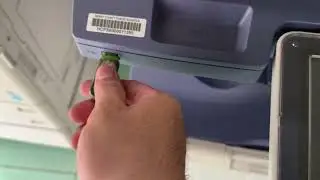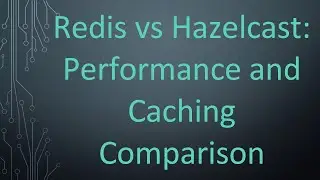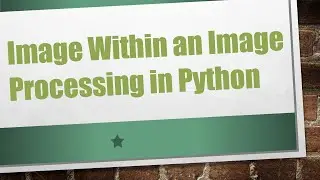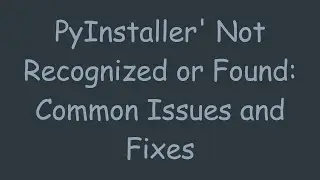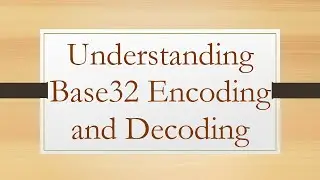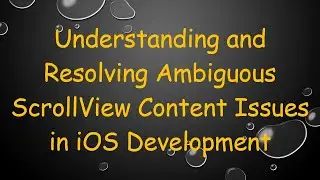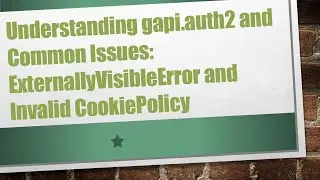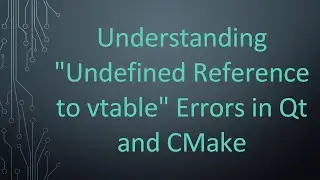Understanding Why BMP Image Dimensions Might Be Lost in Java
A guide to resolving issues related to reading BMP image byte arrays in Java, ensuring the correct retrieval of image dimensions.
---
This video is based on the question https://stackoverflow.com/q/70216301/ asked by the user 'Hawk' ( https://stackoverflow.com/u/934373/ ) and on the answer https://stackoverflow.com/a/70223336/ provided by the user 'Hawk' ( https://stackoverflow.com/u/934373/ ) at 'Stack Overflow' website. Thanks to these great users and Stackexchange community for their contributions.
Visit these links for original content and any more details, such as alternate solutions, latest updates/developments on topic, comments, revision history etc. For example, the original title of the Question was: why read a byte array of bmp and the width and height lost
Also, Content (except music) licensed under CC BY-SA https://meta.stackexchange.com/help/l...
The original Question post is licensed under the 'CC BY-SA 4.0' ( https://creativecommons.org/licenses/... ) license, and the original Answer post is licensed under the 'CC BY-SA 4.0' ( https://creativecommons.org/licenses/... ) license.
If anything seems off to you, please feel free to write me at vlogize [AT] gmail [DOT] com.
---
Why Do BMP Image Dimensions Get Lost When Reading a Byte Array in Java?
When working with images in Java, specifically BMP files, it's not uncommon to encounter perplexing issues related to image dimensions. A common scenario involves uploading a BMP image as a byte array and then trying to retrieve its width and height, only to find that they return -1. This can be frustrating, especially when similar operations on JPG files work perfectly! In this guide, we will explore why this happens and provide a clear solution to the problem.
The Problem
You may find yourself in a situation where you upload a BMP image to your server, and upon attempting to read its dimensions using a byte array, you end up with unexpected and incorrect results:
[[See Video to Reveal this Text or Code Snippet]]
Here, while the JPG image's dimensions are correctly retrieved, the BMP image returns -1 for both width and height. So what is causing this discrepancy?
Analyzing the Issue
Initial Approach
The initial approach may involve reading the image data and attempting to extract Width and Height using ImageIcon directly from the byte array. In the original code you used:
[[See Video to Reveal this Text or Code Snippet]]
However, for BMP files, the manner in which they are processed can introduce complications resulting in width and height being lost.
Key Observations
The ImageIcon class's ability to read BMP data seems impaired, leading to failed width and height retrieval.
Conversely, JPG images are processed successfully without issues, producing accurate dimensions.
The Solution
Fortunately, there's a straightforward fix to ensure you retrieve the dimensions of BMP images accurately. The solution lies in directly reading the image from its byte array using the ImageIO.read() method before attempting to get dimensions. Here's an improved approach to the problem:
Revised Java Code
[[See Video to Reveal this Text or Code Snippet]]
Explanation of Changes
Reading the Image Directly: By directly reading the byte array using ImageIO.read(new ByteArrayInputStream(bytes)), we ensure that the BMP image is properly processed and its dimensions can be accurately retrieved.
Consistent Output: Executing the revised code will yield correct width and height for both JPG and BMP images, resolving the initial issue where BMP dimensions returned -1.
Output Example
You should now see something akin to:
[[See Video to Reveal this Text or Code Snippet]]
for both image formats.
Conclusion
It's essential to properly handle image formats when working with byte arrays in Java, especially with BMP images, which may need special considerations. By making the adjustments outlined above, you can ensure that image dimensions are consistently accessible, regardless of the image format. Do not hesitate to experiment with these methods to enhance your Java image handling capabilities.
If you found this guide helpful, feel free to share it with fellow developers facing similar challenges!

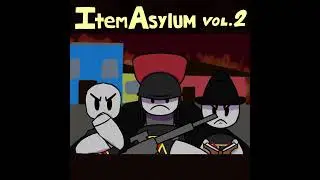
![SLAP HOUSE MAFIA, DKSH, FLOW - BALENCIAGA (REMIX) [NO COPYRIGHT] Car Music 2021](https://images.mixrolikus.cc/video/eJIinxdOOZI)
